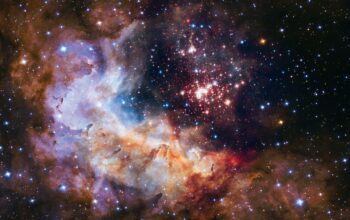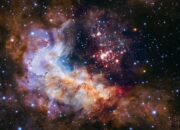Intrinsically woven into the fabric of the universe, nuclear forces serve as both the glue and the adhesive that bind atomic nuclei together. To embark on a journey through the origins of these enigmatic forces is to traverse the realm of the very building blocks of matter. The exploration of nuclear forces is reminiscent of peeling back the layers of an intricate onion, revealing not only their foundational characteristics but also the historical context that led to their discovery.
The genesis of nuclear forces can be traced back to the early 20th century, a period ripe with groundbreaking theoretical advancements. The discovery of the electron by J.J. Thomson in 1897 had already begun to demystify the atom, revealing its internal complexity. However, it was not until the advent of Ernest Rutherford’s gold foil experiment in 1909 that a clearer picture began to emerge. Rutherford’s work unveiled the nuclear model of the atom, suggesting the presence of a small, dense nucleus encircled by orbiting electrons. This revelation catalyzed a paradigm shift in our perception of atomic structure, laying the groundwork primarily for the development of nuclear physics.
However, the unraveling of nuclear forces would not be complete without the contributions of quantum mechanics, introduced through the groundbreaking work of Max Planck and Albert Einstein. The early 20th century flourished with revolutionary ideas about the duality of particles and waves. This profound understanding paved the way for emerging theories about interactions at the atomic level. It was within this quantum enclosure that the discussion of nuclear forces began to take shape.
The strong nuclear force, oftentimes the main protagonist in the narrative of atomic cohesion, arises from the interplay of quarks and gluons—constituents of protons and neutrons. Tantalizingly intricate, this force exhibits an omnipresent influence over the behavior of nucleons; it is characterized by its short-range efficacy, dominantly effective at distances comparable to the size of atomic nuclei. The discovery of the interdependence of quarks through the theory of quantum chromodynamics marked a pivotal moment in our understanding of these forces.
Moreover, the weak nuclear force introduces an additional layer of complexity and is responsible for processes such as beta decay. Although its influence is more subtle and operates over even shorter ranges than the strong force, its import is not to be overshadowed. The interplay between these two fundamental forces shapes not merely the interactions of subatomic particles but also the very processes of stellar evolution and the synthesis of elements in the universe. This is akin to a cosmic orchestra, where each force plays a unique yet integral harmony in the production of chemical diversity.
The early days of nuclear physics were marked by experimentation as much as theoretical prowess. In the 1930s, key experiments conducted by scientists such as James Chadwick, who discovered the neutron, and Enrico Fermi, who explored neutron bombardment of elements, propelled the scientific community deeper into the murky waters of nuclear interactions. These experiments unraveled new elements of atomic structure, revealing that the simple atom of hydrogen was merely a gateway to a plethora of complex isotopes.
As research evolved, so too did the conceptual frameworks that sought to explain observed phenomena. The development of the liquid drop model, introduced by George Gamow, provided an illuminating metaphor for nuclear forces. This model analogized the nucleus to a drop of liquid, subject to surface tension that acted to minimize its surface area. The attractive nuclear force, akin to cohesive intermolecular forces, holds the particles together while simultaneously making the nucleus susceptible to instability at larger sizes. The fragility of this delicate balance evokes images of a precariously stacked Jenga tower, where the removal of a single block can lead to considerable collapse.
In tandem with the emergence of these models, the notion of nuclear fission catalyzed the global discourse on nuclear forces. The realization that a substantial amount of energy could be released from the splitting of heavy atomic nuclei transformed both scientific and societal landscapes. Following the discovery of fission in 1938 by Otto Hahn and Fritz Strassmann, and its theoretical explanation by Lise Meitner and Otto Frisch, the dichotomy of light and dark in nuclear science became pronounced. The implications were enormous: while fission provided a pathway to harness energy, it also laid the groundwork for the development of nuclear weapons, thereby embedding nuclear forces within the annals of international conflict.
The post-war era witnessed a proliferation of research institutions dedicated to nuclear physics. The establishment of particle accelerators and cyclotrons led to the artificial synthesis of heavy elements, epitomizing humanity’s quest for understanding the mysteries of nuclear forces. Moreover, the integration of advanced technologies initiated the exploration of nuclear reactions and decay processes. The tantalizing prospects of fusion—where light nuclei meld into heavier ones—further illustrated the profound interconnectedness of nuclear forces, serving as a metaphorical bridge to the stars.
As we delve deeper into the origins and implications of nuclear forces, it is crucial to acknowledge the societal ramifications that accompany scientific discovery. While the strong and weak nuclear forces serve as the invisible architects of all matter, humanity’s relationship with nuclear research remains complex. In the quest for knowledge, ethical dilemmas surface, demanding a careful navigation of the potentials and perils of nuclear technology.
In conclusion, the origins of nuclear forces encapsulate a rich tapestry of scientific inquiry extending from early atomic theories to contemporary explorations in particle physics. Atomic structure serves as a microcosm reflecting the broader philosophical questions concerning the nature of existence and our place within the cosmos. As we continue to unravel the intricacies of nuclear forces, it becomes evident that their story is not merely one of scientific elucidation, but rather a profound exploration of the delicate balance that sustains the universe itself.












